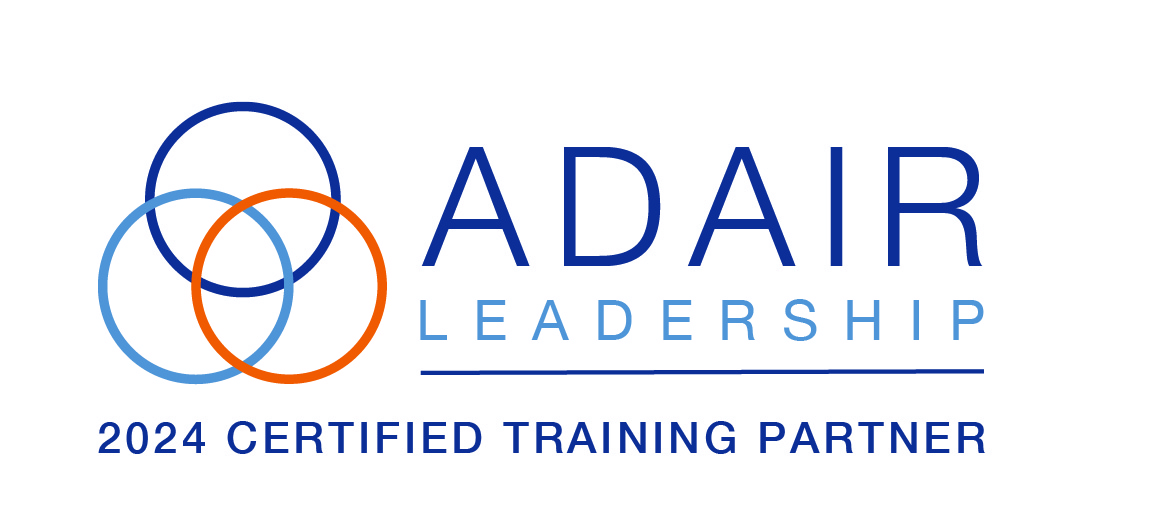What a Leader Actually Does
No. 1 – Setting the Objectives
If you are not sure on the strategy of your organisation, the targets and objectives for your team – there is an answer: go and bang loudly on the right door and ask.
What chance do you as the leader – and more importantly – your team stand if there is doubt as to what is important, when it is required and how?
A clear understanding of the strategy – and the objectives that flow from it – are essential for any successful group. But your job as a leader is more than simply taking those objectives and passing them on in an email…….
Firstly, you have the right to challenge why are we doing it this way? Just because ‘we always have’ doesn’t really cut it in today’s world. You have to understand how the objectives for your team fit with the wider purpose of the organisation and agree them with your own leader or senior colleagues.
You have to interpret the objectives for your team – breaking them down into tasks, plans, budgets, deadlines – and thoroughly brief the people who are looking for you to lead them. And remember they need to know the priorities for today and this week as well as the medium and long-term objectives over months and years.
- Are the objectives specific?
- Is there a timescale?
- Do you have access to timely information to know if the objective is being achieved or do you need to change things?
Your team will be made up of varying levels of experience and confidence – has everyone got the message? Are they clear on what it means for their role in the team? Don’t forget their development and training will flow from the objectives they are set. For example – what is the point of individual appraisals if team members are not totally clear on what they need to achieve?
Setting the objectives is the first of the fundamentals of Action Centred Leadership – what you actually have to do.
Leaders at all levels have three main things on their to do list: achieve the task, develop the team and get the best out of each individual. Priorities may change day to day, but none of the three can be neglected for long.
Action Centred Leadership is a tried and trusted framework to teach what a leader has to do. It is a big and fascinating subject and there is an opportunity to learn the skills with a range of leaders at our 2-day open courses. For details of the next planned courses, please click here.
No. 2 – Planning
Nothing will destroy a team like a bad or inflexible plan – one of the great undeniable truths of running an organisation.
Planning is the second of the functions of leadership we consider in the Action Centred Leadership model – a tried and trusted framework for leadership, based on what the leader actually has to do.
On the basis that everything starts with being clear on the objectives for the organisation, team and individuals, we can now turn to converting words into action with a clear plan.
There are many ways you can plan and the function itself works on different levels – what are we doing this week and how do we achieve our objectives over the next 12 months, two years or five years? One of the great skills of leadership is keeping an eye on the short, medium and long-term plans as they run concurrently.
Let’s say that a new project or acquisition has come along, as an example. How do you start the planning process? The first point is to involve the team – after all they have the expertise and experience and you will be relying on them to carry the plan to fruition. Also, a plan that people had a hand in creating is more likely to succeed than something handed down ready-made.
To test this theory, organise a family holiday without consulting anyone else………………. You may hit the jackpot and pull off the ‘surprise’ trip of a lifetime. On the other hand, you may not satisfy the needs and motivations of your travelling companions.
As always it is a question of balance – few organisations have the luxury of calling a team meeting to get ideas and agreement on every aspect of a plan – but as a principle, using the team’s knowledge and skills is essential.
Action Centred Leadership – based on the work of Professor John Adair, Britain’s foremost leadership scholar – looks at what the leader has to do to ensure the Task is achieved, the Team is functioning, and we get the best out of each Individual.
Naturally, this approach applies to the function of planning. A plan isn’t just about new desks, phone systems and paint colours – but must also consider what it means for the team overall and the individuals within it. What training and support do team members need, what ‘stepping up’ opportunities does the new project create for individuals and how does this feed into their training and development? And don’t forget the obvious: this is a chance to delegate relevant details of the plan to team members – another way of developing skills.
Your planning checklist could include:
- Is there a provision for contingencies?
- Did you and the team actively search for a more creative solution as the basis for a plan?
- Have you made it as simple as possible?
- Does the plan include any necessary preparation or training of the team or individuals?
It’s a big subject and we consider planning and all the functions of leadership in more depth at our Action Centred Leadership course. These can be held in-house or we have regular open courses.
No. 3 – Briefing
If you hear the words ‘I briefed the team – emailed them the spreadsheet’ or ‘I didn’t realise we had to do it’ it is probably time for a career change.
We may live in an age of easy and quick communication – text, email, social media etc. – but that doesn’t mean that the key skills of briefing your team and each individual can be neglected. In fact briefing, aka communication, is a core function and competence for leaders at every level.
It follows smoothly from the functions of defining the objectives and planning and is the link between words and deeds.
Action Centred Leadership looks at how you achieve the task, develop the team and get the best out of each individual, and effective briefing can go a long way to doing all three. The leader can clarify the objectives, outline the standards required, spell out the team’s targets and ensure that each individual knows their role in the plan.
The standard for a briefing talk was, of course, set by Field Marshall Montgomery in August 1942 when he first addressed the Eighth Army as its new commander. As their fourth leader within a year he faced a dispirited audience of 50 to 60 senior officers who had become used to defeats and retreats at the hands of Rommel. The speech was thought to be lost but had been taken down in shorthand and re-emerged in 1981 – it is reproduced in Professor John Adair’s book Effective Leadership.
With one speech he changed the tone: ‘Here we will stand and fight; there will be no further withdrawal …………Our mandate from the Prime Minister is to destroy the Axis forces in North Africa; I have seen it written on half a sheet of notepaper. And it will be done. If anyone here thinks it can’t be done, let him go at once; I don’t want any doubters in this party. It can be done, and it will be done; beyond any possibility of doubt’.
Within two months the Battle of El Alamein was won, the turning point of the war for Britain.
It is unlikely that you will be faced with such a life and death situation at work and have to give such a dramatic briefing!
However, the principles are the same. Monty clarified the objective – victory – set the standards, gave new hope to the team and made it clear that the message must get down to every private soldier.
Leadership isn’t easy and briefing requires skill and practice – and preparation. You have to clarify often complex subjects and make the subject come alive and ensure understanding. Time for questions is important, but a top tip is not to let the session end with the last question – recap the key message of your briefing to make sure everyone goes away quite clear on what is required.
Like every other aspect of leadership, briefing is required at different levels be it to an individual, a single team, a department or the whole organisation. Careful thought on the pitch and tone is required – and simply copying someone into an email doesn’t really do it!
We will be exploring briefing and all of the functions of leadership at our regular ‘open’ ACL courses.
Trevor Vanstone, Perspective HR Director, Accredited ACL Trainer




